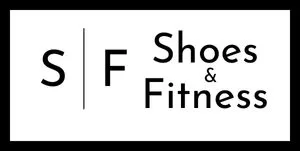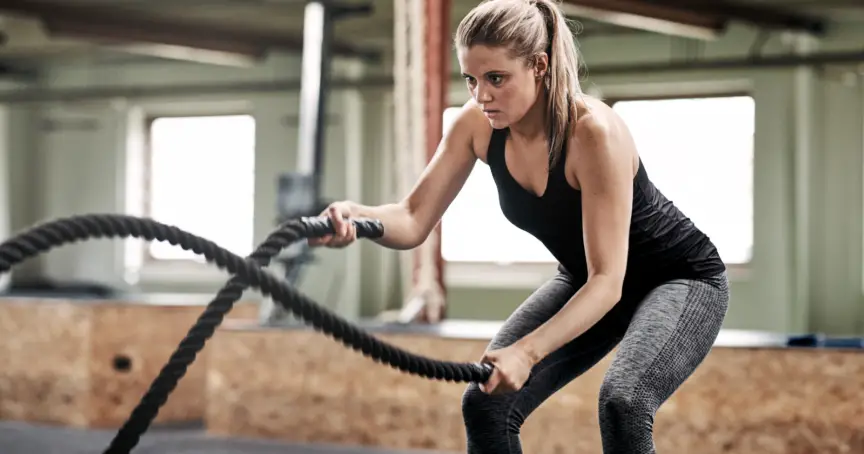ShoesandFitness.com is supported by our readers. We may earn a commission when you purchase through links on this page. Our content is checked for factual accuracy by our editorial team before being published.
Are you looking to improve your overall fitness and strength? Rope exercises can be a great addition to your workout routine. Not only are they fun and dynamic, but they also target a wide range of muscle groups. In this guide, we’ll explore what muscles do ropes work, how they benefit your body, and tips for getting the most out of your rope workout.
What Are Rope Exercises?
Rope exercises are a form of functional fitness that involves using a long, heavy rope to perform various exercises. The rope can be made of different materials, including natural fibers, synthetic fibers, and even chains. The exercises are performed with a repetitive motion and can be adapted to suit different fitness levels.
What Muscles Do Ropes Work?
Rope exercises are a full-body workout that target a wide range of muscle groups, so what muscles do ropes work:
Upper Body:
Rope exercises that involve pulling the rope, such as rope pulls, target the muscles in your upper body, including your back, shoulders, biceps, and triceps.

Core:
Rope exercises that involve twisting and turning, such as rope slams, target your core muscles, including your abs, obliques, and lower back.
Legs:
Rope exercises that involve jumping and lunging, such as rope jumps, target the muscles in your legs, including your quads, hamstrings, and calves.
Overall, rope exercises provide a great workout that can help you build strength, improve your cardiovascular endurance, and burn calories.
Benefits of Rope Exercises
In addition to targeting multiple muscle groups, rope exercises offer numerous other benefits, including:
- Improved Cardiovascular Endurance: Rope exercises are a high-intensity workout that will get your heart rate up, helping to improve your cardiovascular endurance.
- Increased Strength: The repetitive motion of rope exercises helps to build strength in your muscles, particularly in your upper body.
- Burn Calories: Rope exercises are a great way to burn calories and lose weight. Depending on the intensity of your workout, you can burn up to 400 calories in just 30 minutes.
- Reduced Stress: Rope exercises are a fun and dynamic form of exercise that can help to reduce stress and improve your mood.
- Fun and Challenging: Rope exercises can be a fun and challenging way to mix up your workout routine and keep it interesting.
3 Popular and Easy Rope Exercises to Get You Started
Here are 3 examples of easy rope exercises for beginners to get started with.
1. Slams:

Slams involve swinging the rope and slamming it into the ground, using power from the entire body. This exercise is great for building power and strength.
2. Jumping Jacks:

Jumping jacks are a classic cardio exercise that can be made even more challenging with the addition of a rope. Jump over the rope as you perform each jumping jack.
3. Wave:

The wave involves swinging the rope and creating a wave-like motion. This exercise is great for improving coordination and endurance.
Tips for a Successful Rope Workout
Warm Up: Make sure to warm up before starting your rope workout. This will help to prevent injury and prepare your muscles for the workout ahead.
- Start Slow: If you’re new to rope exercises, start with a lighter rope and fewer reps. As you become more comfortable, you can gradually increase the intensity of your workout.
- Focus on Form: Good form is important when it comes to rope exercises. Focus on using proper technique and avoid swinging or jerking the rope.
- Mix It Up: To keep your rope workout fresh and exciting, mix up the exercises you perform and try new movements.
- Have Fun: Finally, have fun! Rope exercises are a fun and dynamic form of exercise that can help you reach your fitness goals.
How to Incorporate Rope Exercises into Your Workout Routine
Incorporating rope exercises into your workout routine is easy and can be done with just a few simple steps:
- Choose the Right Rope: When selecting a rope, it’s important to consider factors such as length, weight, and material. A longer rope will allow for more variety in exercises, while a heavier rope will provide a greater challenge. Synthetic ropes are generally easier to clean and maintain, while natural fiber ropes can offer a more traditional feel.
- Find a Suitable Space: You’ll need a space with enough room to move the rope freely. Consider the height of the ceiling and any obstacles that may be in the way. It’s also a good idea to have a cushioned floor or a mat to reduce impact on your joints.
- Warm Up: It’s important to warm up before starting any exercise, especially when using ropes. Warm up exercises can include jumping jacks, jumping rope, or light cardio. This will help to prevent injury and improve performance.
- Learn the Basics: Start by practicing the basic moves such as the two-handed swing and the alternate swing. Once you feel comfortable with these, you can progress to more advanced exercises.
- Incorporate Rope Exercises into Your Routine: There are many ways to include rope exercises into your workout routine. You can use the rope as a standalone workout, or incorporate it into your circuit training, HIIT, or CrossFit routine.

Improving Your Fitness with Rope Exercises
Rope exercises are a fun and challenging way to improve cardiovascular health, build strength, and improve coordination and balance. Incorporate rope exercises into your workout routine for a fun and effective workout. Always use proper form and seek professional guidance if necessary.
More Fitness Posts
What to Work Out After Chest Day
Should You Do Dead-lifts and Squats on the Same Day?

